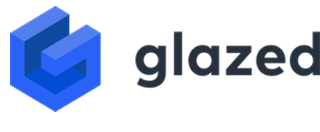Go Language: A Comparative Analysis
Go is a programming language admired for its efficiency, simplicity, and reliability.

Go, also known as Golang, is a programming language admired for its efficiency, simplicity, and reliability, especially in complex server-side applications. Its design, focused on ease of use, readability, and performance, makes it a favored choice for developers worldwide. Companies like Google, which created Go, rely on it for a variety of critical systems due to its excellent concurrency support and fast execution times. Other tech giants, such as Uber, Twitch, and Dropbox, harness Go to power their high-traffic and scalable services. These organizations value Go for its ability to handle massive volumes of requests and data with minimal overhead, proving the language's prowess in meeting the demands of modern software development.
While Java and Python boast extensive ecosystems and large, active communities due to their longer histories, Go's ecosystem, though smaller, is rapidly growing. It benefits from strong support by Google and a passionate community. The ecosystem's growth is a testament to Go's increasing popularity for server-side and backend programming, despite not having as mature a library network as Java or Python.
Top 3 advantages:
Performance and Efficiency
Go's design prioritizes speed and efficiency, making it faster and more resource-efficient than languages like Python and Ruby, particularly for concurrent operations. Unlike Java, which runs on a JVM adding overhead, Go compiles directly to machine code, offering superior execution speed. C++, while powerful for low-level system access and performance optimizations, can be complex and challenging, whereas Go's simplicity does not compromise its performance, providing a balanced solution for rapid development cycles.
Concurrency: A Game Changer
Concurrent programming is where Go really flexes its muscles, thanks to its native support for concurrency with go-routines and channels. This setup is not just lighter but also simpler to manage than the traditional threading models of Java or Python. For developers, this means being able to craft efficient, concurrent programs without the headache of complexity seen in C++ or the constraints of Python's Global Interpreter Lock.
Simplicity and Readability
Go's syntax is deliberately minimalistic, focusing on simplicity and readability, which reduces the learning curve for new developers and enhances productivity for experienced ones. This simplicity contrasts with C++'s complexity and Java's verbosity. Ruby and Python, known for their clean syntax, offer simplicity but can't match Go's performance, especially in concurrent programming contexts.
Choosing the Right Tool for the Job
- Server-side and Backend Applications: Go is a top choice for its simplicity, efficiency, and concurrency features.
- Enterprise-level Applications: Java, with its extensive ecosystem and robust framework support.
- Data Analysis and Scientific Computing: Python remains the go-to language for its simplicity and rich set of libraries.
- Low-level System Programming: C++ stands out for its performance characteristics and control over system resources.
Conclusion
Go presents a compelling option for modern software development, balancing simplicity with powerful performance and concurrency features. Its growing ecosystem and community indicate a bright future and expanding use cases. While Go may not be the universal solution for all programming needs, it offers a pragmatic choice for projects where its strengths—speed, efficiency, and concurrency—can be fully leveraged.
Depending on the project requirements, developers might still prefer Python for rapid prototyping, Java for enterprise solutions, or C++ for system-level programming. However, for many, especially in the realm of cloud services and microservices architecture, Go represents a modern, efficient alternative worth considering.
Thanks for reading. If you enjoyed our content you can you can stay up to date by following us on Twitter, Facebook and LinkedIn 👋


